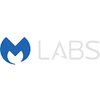The current threat landscape is a mish-mash of online ransomware, offline ransomware, and those that are a mixture of the two.

Professional ransomware authors typically use online Command & Control centers for their campaigns as they provide multiple benefits, including the ability to track affiliate campaigns, use unique keys created for victims, and alter campaign specifics on the fly. The old "if it ain't broke, don't fix it" method has served them well for the longest time, but everything has to change eventually, and even malware makers have to adapt with the times.
The reason for this shift in attack strategy is that not all computers are online, which represents a blip in the ability of bad actors to make as much money as humanly possible.
If ransomware can't “phone home” when it's time to begin infecting the target, then no encryption can take place and their efforts are wasted. To get around this, it's becoming more common to see offline features built into more traditional packages. As a result, offline ransomware is becoming a solid and popular alternative, even if it is a little limiting in some circumstances as we'll discuss later.
A major player that recently included offline functionality in its ransomware is the infamous Zepto. This ransomware, which typically arrives in a Zip attachment via a rogue email, renames all infected files to .zepto and demands an expensive ransom be paid should the victim be unfortunate enough to execute the file.
Zepto, which is a Locky variant, has been causing problems for some time now with its default setup, but it only recently made the leap into the world of offline infection.
What if the victim drops offline or attempts to pull the plug before it's too late? No problem -- Zepto can work around it, thanks to hardcoded RSA keys, which means there's no need to contact the C&C server. Zepto even goes after files it considers to be most valuable first, such as those related to virtual wallets and .doc files, over other potentially less important files in a determined effort to make the victim pay up as fast possible.
The current threat landscape is a mish-mash of online ransomware, offline ransomware, and those that are a mixture of the two.
To be clear, it's debatable whether fully offline ransomware is "better" than families that make use of C&C servers. Many ransomware authors try to combine both approaches, using offline as a sort of fallback for when the more typical infection opportunity isn't viable.
Do-it-yourself ransomware is a huge attraction for script kiddies, and the complex setup that we see from the professionals is often beyond them. Giving up the day job of having to worry about C&C servers and complex distributed management means creators get to fly a little lower under the radar from law enforcement and security researchers, so this is naturally an attractive proposition for them.
The flipside is that many files "inspired" by the likes of Zepto and others tend to be broken or use predefined keys, which means someone who pays can share their unlock code(s) with others. Combine that with the inability to track a campaign's success, and a would-be ransomware author is missing valuable tools to learn and move up the ranks, leaving the field to the big players churning out hundreds of thousands of infected emails.
Combining a layered approach to security with a solid and logical backup system ensures that the impact from an outbreak will be thwarted. With ransomware profits expected to hit $1 billion this year, there's never been a better time to take action -- whether online or off.
About the Author(s)
You May Also Like
Securing Code in the Age of AI
April 24, 2024Beyond Spam Filters and Firewalls: Preventing Business Email Compromises in the Modern Enterprise
April 30, 2024Key Findings from the State of AppSec Report 2024
May 7, 2024Is AI Identifying Threats to Your Network?
May 14, 2024Where and Why Threat Intelligence Makes Sense for Your Enterprise Security Strategy
May 15, 2024
Black Hat USA - August 3-8 - Learn More
August 3, 2024Cybersecurity's Hottest New Technologies: What You Need To Know
March 21, 2024




